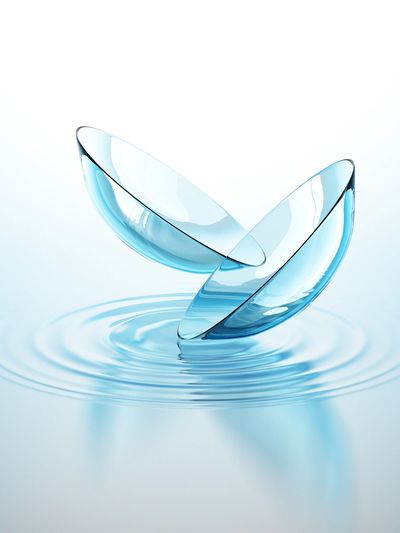the different types of Contact Lenses

Deep Dive
Gone are the days when contact lenses were a one-size-fits-all solution. Today, they’re a custom-fit vision correction tool that can suit almost any lifestyle and need. Whether you're nearsighted, farsighted, or just looking for a change, there's likely a perfect lens for you.
Let’s break down the main types of contact lenses available.
1. The Soft vs. Rigid Debate
First, you have two main families:
- Soft Contact Lenses: Made of flexible, water-containing plastics (hydrogels). They're incredibly comfortable from the first wear and are the most popular type. They conform to the shape of your eye.
- Rigid Gas Permeable (RGP) Lenses: Made of a stiffer, durable plastic that allows oxygen to pass through to the eye. They offer exceptionally sharp vision and are more durable, but require a longer adaptation period.
- Scleral Lenses: These are larger than both Soft and RGP lenses, and are fitted when these lenses are no longer suitable, eg keratoconus and dry conditions.
2. The Replacement Schedule: How Often Do You Change Them?
This is often the most important factor for wearers.
- Daily Disposables: The ultimate in convenience and hygiene. You wear a fresh, sterile pair each morning and throw them away at night. No cleaning required! They’re perfect for people with allergies, those who wear lenses sporadically, or anyone who wants a low-maintenance routine.
- Bi-Weekly & Monthly Disposables: You wear the same pair for two weeks or a month, but must clean and store them nightly in a disinfecting solution. This option can be more cost-effective for full-time wearers.
- Quarterly or Yearly Lenses (Conventional): These are less common now. They are durable lenses designed to last for several months to a year with proper daily care.
3. The Specialized Lenses for Specific Vision Needs
Not all eyes are created equal. Thankfully, lenses aren't either.
- Toric Lenses: Designed to correct astigmatism, which is caused by an irregularly shaped cornea. They are weighted to stay in the correct position on the eye.
- Multifocal & Bifocal Lenses: For adults over 40 who experience presbyopia (the need for reading glasses). These lenses have different zones to correct for near, intermediate, and distance vision all at once.
- Monovision: A fitting technique where one eye (usually the dominant one) is fitted with a lens for distance, and the other eye is fitted with a lens for near vision. Your brain learns to use the correct eye for the task at hand.
4. The Fun & Fashionable Options
Contacts aren't just for vision!
- Color Contact Lenses: From enhancing your natural eye color to completely transforming it (think from brown to vivid blue), these lenses are a fun way to experiment with your look.
- Cosmetic & Special Effect Lenses: Perfect for Halloween or theatrical use, these can create cat eyes, white-out eyes, or other dramatic effects.
The Most Important Takeaway:
The best way to determine which lens is right for you is through a comprehensive eye exam and fitting.
We will consider your prescription, eye health, and lifestyle to recommend the perfect pair.
Ready to see the world more clearly?
Book an appointment with us and explore the possibilities.
Remember that check-ups are essential to maintain optimal vision and overall health.
This website uses cookies.
We use cookies to analyze website traffic and optimize your website experience. By accepting our use of cookies, your data will be aggregated with all other user data. Privacy Policy

Have a Wonderful Christmas Holidays and a Happy New Year
We will closed during the Christmas break and we look forward to seeing you next year when we are back open on Tuesday 6th January 2026.
We will still be responding to any email queries during this time.
